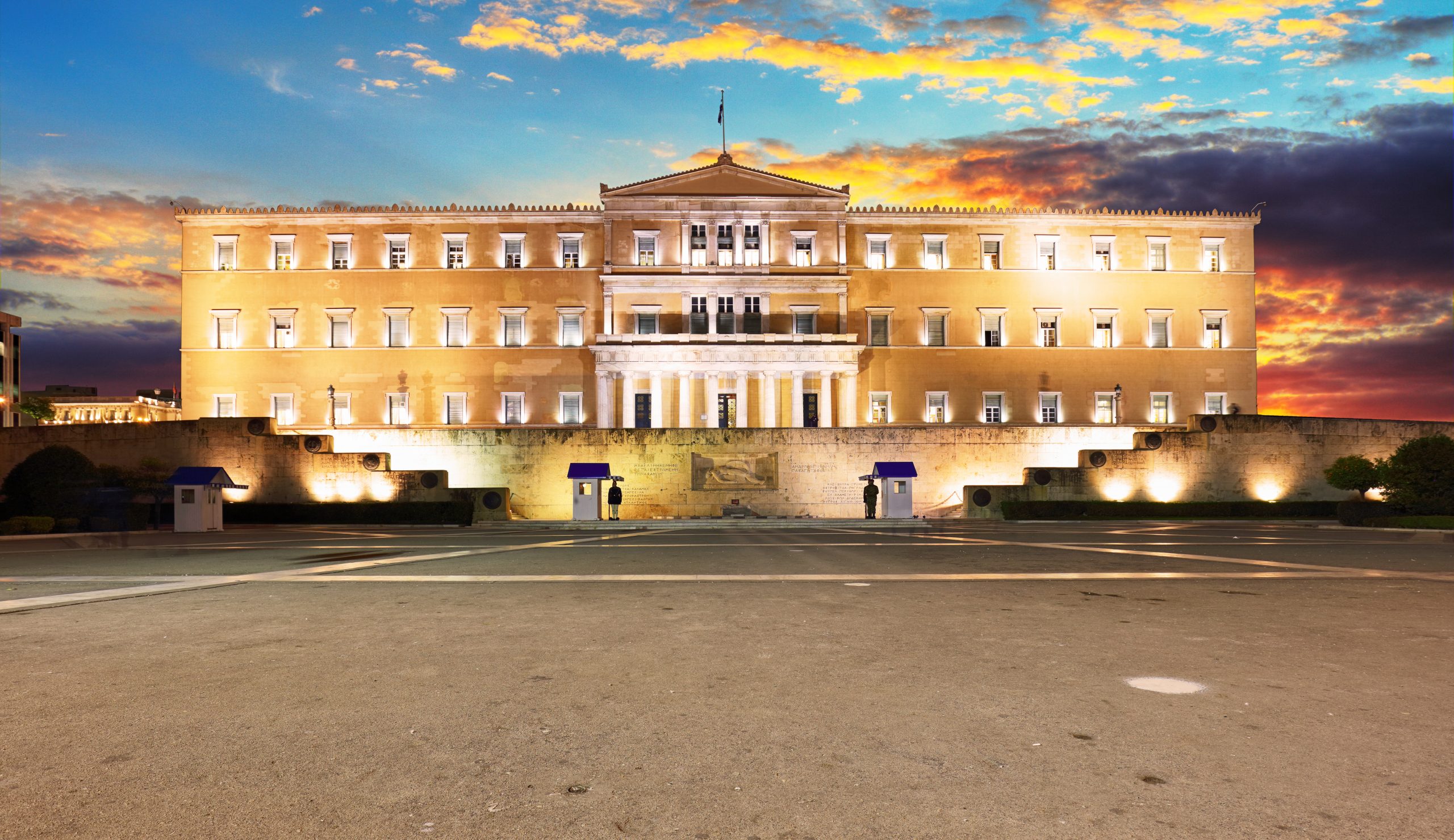Greece’s parliament building is revealing some surprises as it undergoes a makeover.
One hundred and eighty years after the completion of the emblematic building, the Hellenic Parliament is undergoing a complete restoration of the facade.
As reported by To Vima, yesterday the President of the Parliament Costas Tasoulas invited two MPs– Theodora Tzakri (who had just become independent) and Pavlos Christidis of PASOK to show them a discovery made in the restoration process.
What lies under the facade of the Greek parliament building? Stone!
The Speaker of the Parliament also showed the President of the Republic, Katerina Sakellaropoulou, the underlying stones with which the Parliament was built.
Resistant to earthquakes and fires, the stone has held a strong foundation of the building for 180 years.
The neoclassical building was originally built between 1836–1843 as a royal palace for King Otto of Bavaria. Designed by German architect Friedrich von Gärtner, it was constructed in an attempt to reflect ancient Greek architecture styles. The building featured a square layout with four three-story wings, a two-story middle wing, and two courtyards, while its interiors were adorned with historical and mythological scenes, though few have survived.
Following the establishment of the Greek Republic in 1924 and the ousting of the monarchy, the building was given a host of different uses, including to host the air force defense, the Greek Red Cross, a hospital and refugee relief organizations. It became home to the Greek parliament in 1935.
Throughout its history, the building has adapted to meet evolving needs. Major structural changes included the demolition and reconstruction of the central wing, a new northern entrance, and the addition of parliamentary chambers. In recent years, modernizations such as a parking structure, new landscaping, and technological upgrades have been added.



